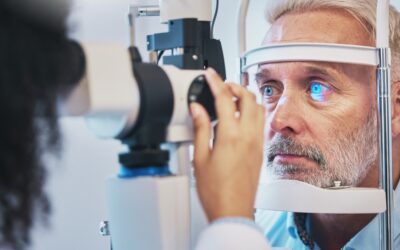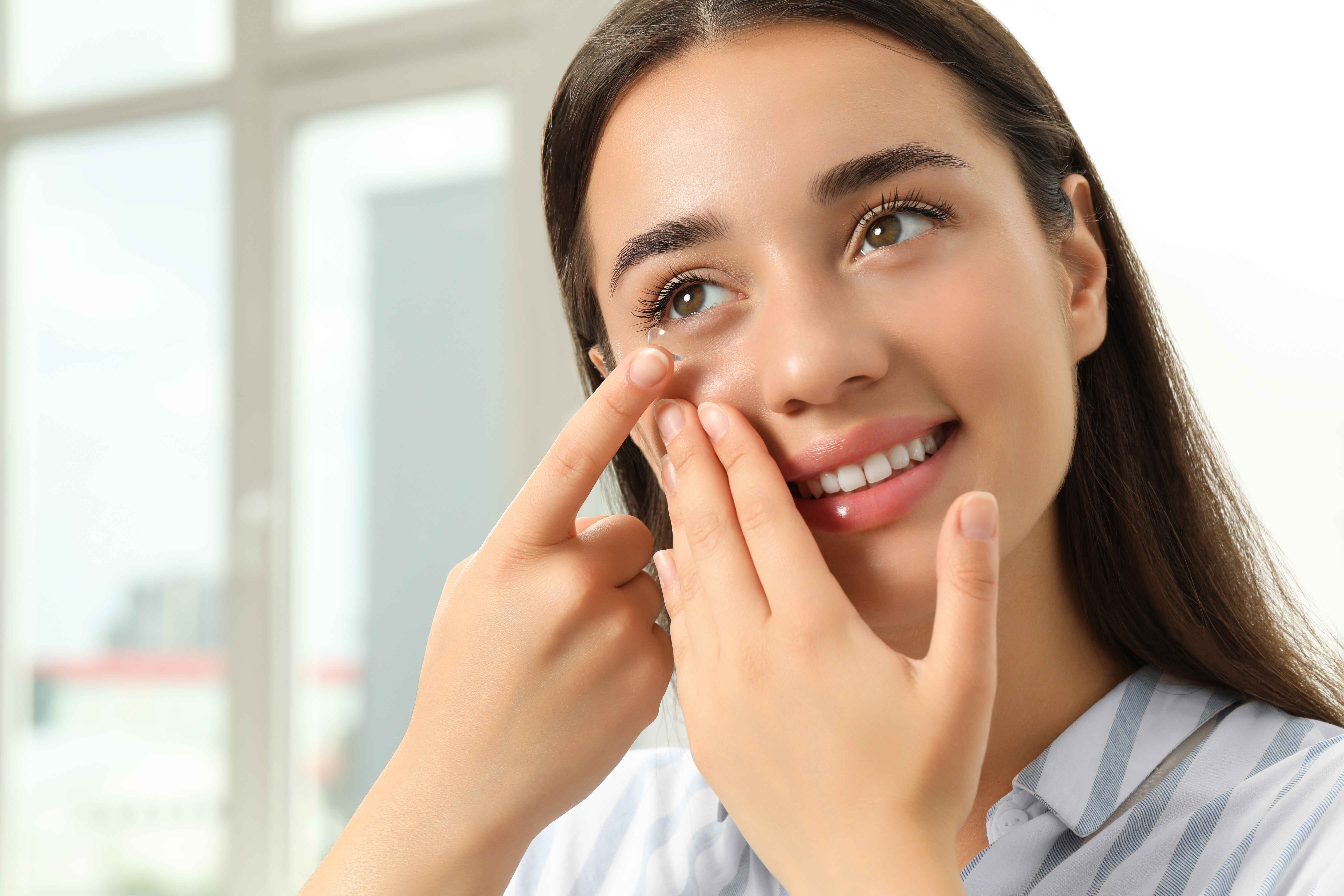Table of Contents
The eye care industry is constantly evolving, so providers should stay abreast of the latest trends to be successful in their practice. Here are five key eye care industry trends in 2023 that providers should be aware of and how they can use those trends to better their business.
1. No Blues is Good Blues
The lockdown during the 2020 COVID-19 pandemic created a significant increase in remote work and an escalation in the need for “computer glasses,” also known as blue light blockers.
While there is no long-term research on how blue light affects eyes, shorter-term studies suggest they may be helpful. Recent research found that wearing glasses that filter out blue light can help people sleep better. As more Americans spend their entire workday in front of a computer, sales of these glasses have skyrocketed.
The blue light exposure from using electronic devices late in the day can interrupt the sleep cycle. Looking at a computer or device before going to bed can make it more difficult to fall asleep and cause drowsiness the next day.
2. Artificial Intelligence
Artificial intelligence is software that can mimic cognitive functions such as problem-solving. AI machines can be trained to perform tasks such as recognizing large amounts of data.
Artificial intelligence in eye care is gaining traction as algorithms help predict risks for conditions such as diabetic retinopathy and macular degeneration. AI enables the screening of eye diseases at scale and more efficiently.
When a photo is taken of the back of the eye, artificial intelligence programs eliminate the guesswork and detect certain retinal pathology. Current eye scans can take an extended time to perform and interpret whereas AI can do the job in just a few seconds. These technologies have the potential to fundamentally transform eye care.
3. What’s the Plan
A large part of the American population needs vision correction. Even for those with adequate vision, regular eye exams can play a vital role in their overall health. Eye exams can detect some systemic conditions and determine if extended exposure to devices is wreaking havoc on the eyes.
For those who require corrective lenses and regular eye care, a personalized plan may be just what the doctor ordered! When you are putting a benefits package together, you may want to consider adding a vision plan.
Vision Care Direct offers more choices than any other vision plan, including flexible plans with quality coverage. The more problems you solve for your client, the less likely they will want, or need, to shop around.
When patients have an eye exam without vision coverage, the cost can catch them off guard. Medicare and most health plans don’t cover the cost of a routine eye exam. Therefore, a personal vision plan is an attractive way to get the most coverage for eye care.
A personal vision plan provides benefits such as preventative eye exams, prescription eyewear, contact lenses, and, in some cases, reduced fees for vision correction surgery.
4. Myopia Management
With a surge in patients with myopia, or nearsightedness, in recent years, technology has been evolving and is now on the cutting edge in discovering ways to manage the progression. Studies have shown a correlation between device usage and lack of outdoor activities and the development of myopia.
Spending time outdoors is healthier than indoor time, especially for children consumed with screen time on their devices. Although the science behind it is still unknown, lack of outdoor time has impacted myopia rates. For example, children who spend less than 13 hours a week outside have a higher incidence of myopia.
Myopia management uses different sources of treatment to reduce the level of myopia. It may include eyeglasses, contact lenses, or eye drops.
5. Wearable Medical Devices
Smartwatches and fitness trackers are just a few of the wearable technology devices that have become a new way of life. With technology advancing daily, wearable technology has branched out to include headsets and now eyewear.
This tech has opened a new world of adventure with virtual goggles for games, but it is also evolving into a new frontier in the medical field. Doctors can utilize wearable devices to monitor patients remotely and track their health history.
Virtual headsets can enable vision development. With the aid of an experienced optometrist, these devices are being used to improve eye-hand coordination and depth perception.
Smart glasses allow those who wear them to take hands-free photos and videos and even answer phone calls. Advancements in wearable technology are leading the way to provide patients with more freedom.
To find out more, please feel free to visit our website.





















































